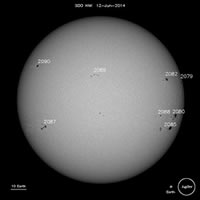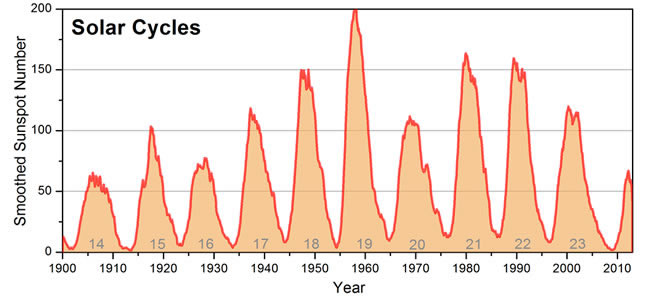
| {column0} |
| {column0} |
 Sunspots are dark areas on the solar surface which contain strong magnetic fields that are constantly shifting. They occur when strong magnetic fields emerge through the solar surface and allow the area to cool slightly, from a background value of 6000 K down to about 4200 K. These areas appear as dark spots in contrast with the rest of the Sun’s surface in white-light images.
Sunspots are dark areas on the solar surface which contain strong magnetic fields that are constantly shifting. They occur when strong magnetic fields emerge through the solar surface and allow the area to cool slightly, from a background value of 6000 K down to about 4200 K. These areas appear as dark spots in contrast with the rest of the Sun’s surface in white-light images.
Sunspot groups can be many times the size of Earth and contain complex magnetic structures. Forecasters analyze the size of active regions, assess their magnetic complexity, and evaluate growth and decay. Following this analysis, forecasters will predict the probability of a solar flare.
The Solar Cycle
The number of sunspots on the surface of the Sun increases and decreases in solar cycles of approximately 11 years.
Solar Minimum refers to the several years when the number of sunspots is lowest; Solar Maximum occurs in the years when sunspots are most numerous.

The Sun is usually very active when sunspot counts are high; however, severe storms can occur anytime during the solar cycle.
The Sun gives off more electromagnetic radiation than usual during solar maximum. This extra energy creates changes in the Earth’s upper atmosphere.